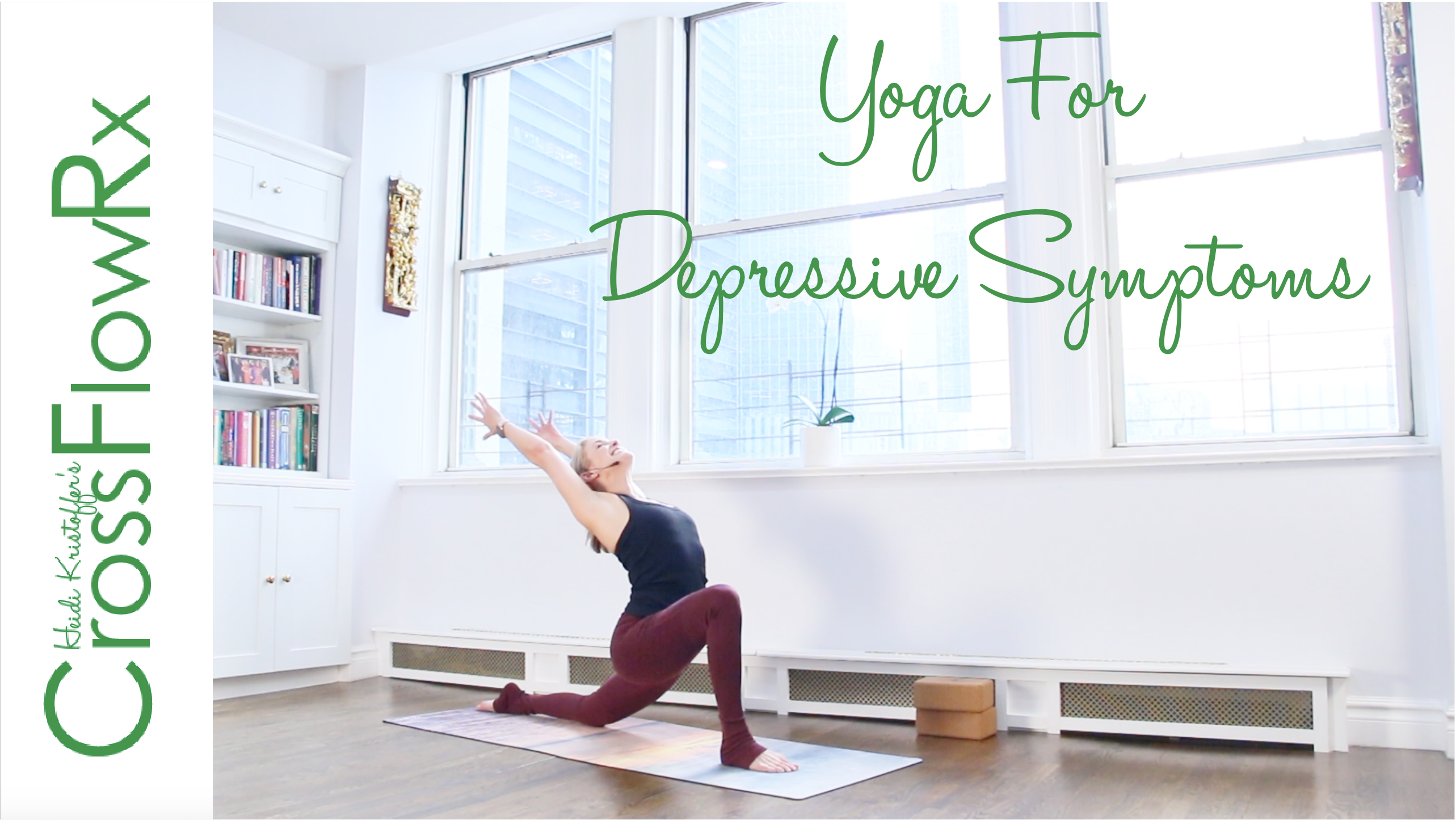Yoga for Depressive Symptoms with Dr. Rachel Goldman

COVID (and the rest of 2020) has been ROUGH for everyone – beyond the physical virus, and the economic fallout, it has impacted the MENTAL health of SO MANY. Being isolated from friends and loved ones takes a toll on one’s emotions. Tack on the social unrest and an uncertain political climate, and 2020 seems to be a perfect storm. According to a study released by the CDC late summer of 2020: 40.9% of respondents who completed surveys during June reported an adverse mental or behavioral health condition, including those who reported symptoms of anxiety disorder or depressive disorder (30.9%). And, according to JAMA, the depression rate has TRIPLED for US adults since the pandemic started.
“For the past several months, we have been worried about a world where hundreds of thousands of people were dying”, Dr. Rachel Goldman, Ph.D., FTOS, Licensed Psychologist, said. “We were worried about getting sick and worried about others getting sick. So much about life as we knew it became uncertain. Maybe if you were a working parent, you also became a full-time employee and full-time homeschool teacher, while protecting your family and yourself from the pandemic.”
For me (Heidi) personally, I have long worked for myself, from home (while popping out to teach and see clients throughout the day), so the working-from-home piece wasn’t entirely new, but … all of a sudden I was expected to do everything that I had hired several employees to physically help with, AND be a homeschool teacher to my three children, AND I get interrupted every 5 minutes, AND the schedule changes daily, AND I no longer have my IRL SoulCycle morning mamas crew to vent to! To say that this pandemic has left me beyond stressed, overwhelmed, burnt out, and DEPRESSED – like most woman I know – is a wild understatement.
So… how do we avoid burnout, which can often be a slippery slope towards depression and / or other mental health disorders? First, get out of your head that self-care is selfish. Self-care is ESSENTIAL. It is just like the oxygen mask announcement on the plane (remember those?!): you must first give yourself oxygen, otherwise, you may pass out from lack of it, and then you will not be able to help ANYONE.
According to Dr. Rachel, “Individuals who do not participate in self-care will eventually burnout and not be productive in any aspect of life, personal or professional. We will eventually get sick.”
Where does one start? Dr. Rachel recommends cultivating a toolbox. “Have at least three stress management tools, one of which is something internal, something that you don’t need anyone else or anything else for.” THIS is where our CrossFlowRx video comes in. Plus, studies from Harvard show that exercise can be an effective treatment for depression for a myriad of reasons: including improving sleep quality, supporting nerve cell improvement, and releasing endorphins.
Put daily “me time” (do our flow!) in your calendar, just as you would schedule any other call or meeting. Creating breaks throughout the day to rest or recharge are critical (according to the science Arianna Huffington spoke about in her episode of “Off the Gram” podcast, this can be done in as little as 60 seconds!), especially during this trying time of the COVID pandemic.
If you want to schedule HEALTHY and productive “me time”, YOGA has you covered no matter how many or few minutes you have! Not only does practicing yoga give you a chance to quiet your mind and focus on yourself, it’s also been shown in studies to raise levels of the neurotransmitter gamma-aminobutyric (GABA) and serotonin; low levels of which have been linked to depression
Yoga is a great way to bring oxygen to your brain cells, visualize “wringing yourself out” of any negativity or toxins, and open your ribcage to deeper breaths. It helps you tap into your inner child, literally flip your perspective, and feel a whole lot better.
We all know that cardio creates those feel good endorphins. But, did you know that specific categories of Yoga poses shown in studies to help with depression include:
- Twists: the ultimate detoxifier—of the body and the mind. With each exhale, you have the opportunity to visualize wringing yourself out like a sponge, getting rid of what you don’t want or need in your body or mind, and each inhale serves to create new space, and invite what you do want into your mind and body.
- Chest and heart openers: physically increase your lung capacity, allowing for deeper breathing.
- Balancing poses: the concentration required puts you firmly into the here and now, making it difficult for your mind to wander to unpleasant places.
- Inversions: increase the circulation of blood and oxygen to the brain, which calms the mind and makes you happy.
- While not a “pose” category, yogic breathing exercises, along with visualization, are also incredibly powerful tools. In particular, a yogic breathing exercise, often referred to as “elevator” or “three part” breathing, which includes visualization, has been shown to be particularly helpful at reducing depressive symptoms. For more information on this technique, head over to this helpful article.
With the input of Dr. Rachel, we put together a flow of poses aimed at reducing depressive symptoms for the CrossFlowRx section of CrossFlow Yoga. While we very much hope this flow improves your mood, just as each of us are unique individuals with different needs, how one navigates stress and depression may look very different on people. These moves and methods may work for some, and not work for you. It’s important to build your own toolbox of coping skills that you can use when you need them. You may find that certain coping skills, such as yoga, work best for you at certain times, but other coping skills may work for other emotions. It is therefore recommended to have a variety of coping skills in your toolbox that you can pull from and use when you need them. Remember this is not intended to be a substitute for medical advice and to always consult with a healthcare professional for your specific health needs.
To try our flow, please visit: https://digitalstudio.heidiyoga.com/
For more on Dr. Rachel, please visit:
Website: http://www.drrachelnyc.com/
Instagram: https://www.instagram.com/drrachelnyc/











